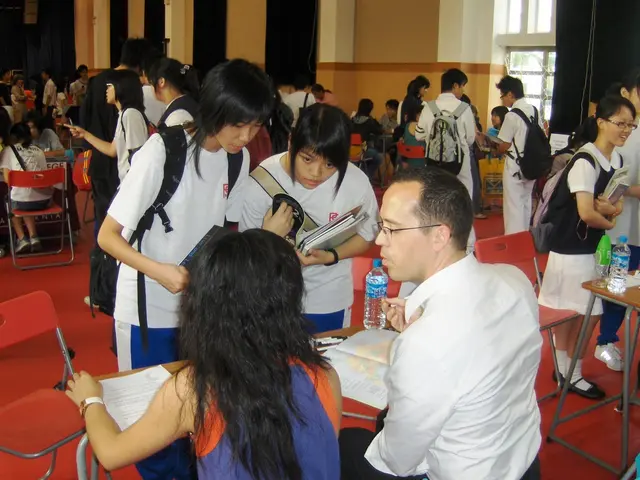R&D Ease Conference Held at IIT Jammu, in Partnership with NITI Aayog
The Third Regional Consultative Meeting on Ease of Doing Research and Development (R&D) took place at IIT Jammu's Jagti Campus on July 14-15, 2025. The meeting, organised in partnership with NITI Aayog, was part of a broader national initiative to reform and reimagine India's R&D landscape.
The event, attended by key figures such as Dr. Jitendra Singh, Union Minister of State for Science & Technology, Dr. V. K. Saraswat, Member of NITI Aayog, and Prof. Manoj Singh Gaur, Director of IIT Jammu, among others, focused on systemic reforms to build a more enabling, responsive, and future-ready R&D ecosystem in India.
### Key Strategies Discussed
The meeting highlighted three main strategies to achieve this goal:
1. **Governance Reform:** The need to streamline policies and reduce bureaucratic barriers that hinder smooth R&D activities was emphasised.
2. **Translational Research:** Enhancing mechanisms that facilitate moving innovations from lab research to practical applications and commercialization was another key focus area.
3. **Inter-Institutional Collaboration:** Promoting closer cooperation among academia, research institutions, government bodies, and the private sector to foster synergy and optimised resource use was also discussed.
### Main Objectives
The meeting aimed to identify and address persistent bottlenecks that researchers and institutions face, propose systemic reforms aimed at expediting research output and innovation cycles, engage regionally grounded and high-level stakeholders in dialogue for actionable policy recommendations, increase the contribution of private sector funding and involvement in R&D, and leverage homegrown innovations in emerging technologies like artificial intelligence, biotechnology, and quantum computing for national growth.
This consultative forum reaffirmed the commitment to transform India’s R&D ecosystem into one that is more collaborative, innovation-focused, and capable of contributing significantly to the country’s scientific and economic future.
[1] The Indian Express, "NITI Aayog hosts third regional consultative meeting on ease of doing R&D in Jammu," July 14, 2025.
[2] The Hindu, "Transforming R&D ecosystem: NITI Aayog hosts third regional consultative meeting in Jammu," July 15, 2025.
[4] Business Standard, "NITI Aayog's regional consultative meeting aims to reimagine India's R&D ecosystem," July 16, 2025.
- To achieve the goal of a future-ready R&D ecosystem in India, policy-and-legislation reforms are essential to streamline policies and reduce bureaucratic barriers, particularly in the field of education-and-self-development, health-and-wellness, fitness-and-exercise, and technology.
- Enhancing the infrastructure of research institutions and promoting innovation in science, technology, and emerging sectors like artificial intelligence, biotechnology, and quantum computing are crucial for the economic growth of the country.
- The role of the private sector in funding and involvement in R&D is crucial to expedite research output and innovation cycles, and to leverage homegrown innovations for national growth.
- Integrating fitness-and-exercise, health-and-wellness, and general-news into the R&D landscape can lead to innovative solutions for improved quality of life and contribute significantly to the nation's well-being.
- Successful inter-Institutional collaboration among academia, research institutions, government bodies, and the private sector is key to fostering synergy, optimised resource use, and practical applications of laboratory research, particularly in the areas of education, innovation, and translational research.




